Diekirch Jagdpanzer 38(t) Hetzer G-13
This Surviving World War 2 Jagdpanzer 38(t) Hetzer 75mm PAK 39 (L/48) tank destroyer can be seen at the Diekirch War Museum in Luxembourg. The G-13 designation means that it was built after WW2 for the Swiss Army.
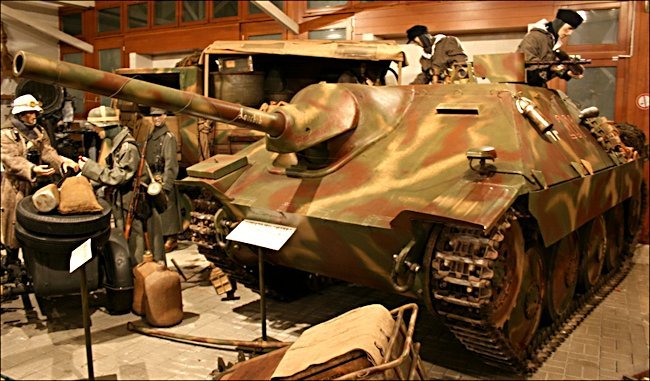
World War 2 Jagdpanzer 38(t) Hetzer tank destroyer at the Diekirch War Museum in Luxembourg
Hetzer tank destroyers charge through the Ardennes
During the latter part of the war the Germans were in desperate need of more armoured vehicles. The problem was they were short on resources. Allied bombing of the industrial areas of Germany did not help in maintaining production targets. One answer was to fit large guns onto the chassis of obsolete tanks. The gun and crew would then be encased in large slabs of sloping protective armour. These became known as tank destroyers or in German the Jagdpanzer.
One of the most effective German light Jagdpanzers was what is more commonly known now as the Hetzer. 'Hetzer' is the German word for 'Chaser'. This tank destroyer was never officially called the Hetzer. It was known as Jagdpanzer 38(t) Sd.Kfz 138/2. German Generaloberst Heinz Wilhelm Guderian sent a report to Hitler in which he stated that the name 'Hetzer' had been given to this small tank destroyer by the troops who man the vehicle.
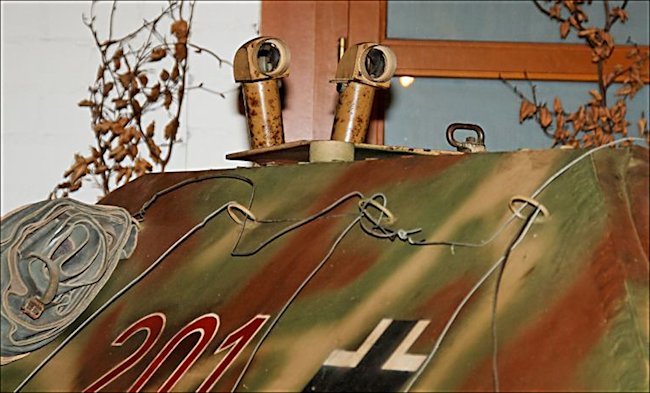
The commander of a Jagdpanzer 38(t) Hetzer tank destroyer had to poke out a periscope range finder out of his top hatch to see what was happening in battle conditions.
It was small and light. It had a top road speed of 26 mph (42km/h). It had an operational range of 110 miles ( 177km). It was based on the Czechoslovakian built German army Panzerkampfwagen 38(t) tank made by CKD and Skoda. The sufix (t) does not mean tank. It stands for tschechisch, the German word for Czech.
It was fitted with the highly effective 75mm PaK 39 L/48 anti-tank gun. This was a modified version of the same gun fitted to the successful StuG III and IV tank destroyers. It was able to destroy any the Allied tanks. It could penetrate most of the Russian tank's frontal armour except some of the heavy tanks armour. Its shells could easily penetrate the side and rear armour of World War II tanks and assault guns.
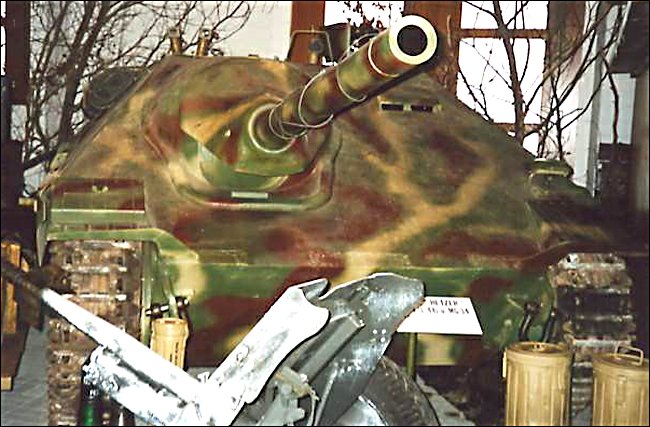
The 60mm sloping front armour on the Jagdpanzer 38(t) Hetzer was equivalent to 120mm of Vertical armour.
It had good sloping armour which meant many incoming shells bounced off. It had a very low profile, which was ideal the concealment when setting up an ambush. The Hetzer was not designed to engage in close quarter tank battles. It was built to wait in predetermined locations where enemy movements were suspected. The crew were trained to engage targets at long distances and then change location before they could be spotted.
Unlike his predecessors, like the thinly armoured Panzerjäger Nashorn and Marder, it had good frontal armour protection. The 60 mm armour plate at the front of the vehicle was sloped at 60° which gave the equivalent protection of the vehicle fitted with 120mm of vertical armour. So long as the Hetzer tank destroyer crew kept the front of the vehicle pointed towards the enemy they would be safe.
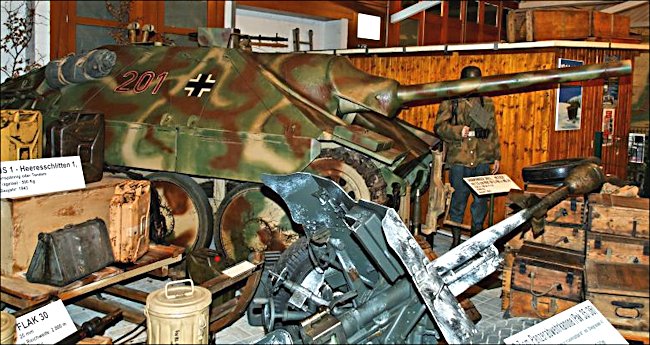
The close quarter protection machine gun was fitted to the top of the Jagdpanzer 38(t) Hetzer tank destroyer
Most Allied tank guns could not penetrate the Hetzer's front armour. The side armour was much thinner and only really adequate to protect the crew from shell splinters and small firearm ammunition. A German Army report from the Eastern front dated October 1944, said "Front armor can withstand Soviet 76.2mm gun fire. Current losses are results of side and rear plates being hit."
Quite often you would see photographs showing spare tank track wheels bolted to the sides of the Hetzer the give the crew added protection. Conditions inside the Hetzer the four-man crew were cramped, but a lot safer than being in a more roomy open topped Marder self-propelled gun. Many German armoured fighting vehicles suffered from mechanical breakdowns. Most of the early faults with the Panzer 38(t) tank had been discovered and rectified in 1939. The Hetzer crews could rely on their machine.
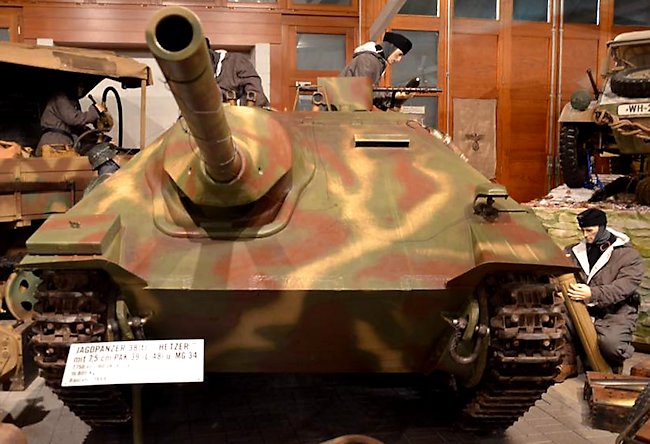
World War 2 Jagdpanzer 38(t) Hetzer tank destroyer at the Diekirch War Museum in Luxembourg
The Jagdpanzer 38(t) Hetzer tank destroyer equipped the Panzerjägerabteilungen tank destroyer battalions of German army infantry divisions, SS units, Panzergrenadiers and various independent units. They were deployed to the Ardennes during the Battle of the Bulge offensive in December 1944. They destroyed many American Sherman tanks. Because of their small size they found no difficulty negotiating a small cobbled streets found in Belgium Ardennes villages, unlike the huge gigantic King Tiger tanks.
Many German Hetzer tank destroyers had to be abandoned because of lack of fuel and ammunition during the attack. Some are knocked out by well aimed Allied shots to the weaker armoured side and rear of the Hetzer. Others were damaged by anti-tank landmines and could not be repaired on the battlefield. When the weather cleared a number of Hetzer's were destroyed by Allied rocket firing ground attack aircraft.
Battle of the Bulge books

